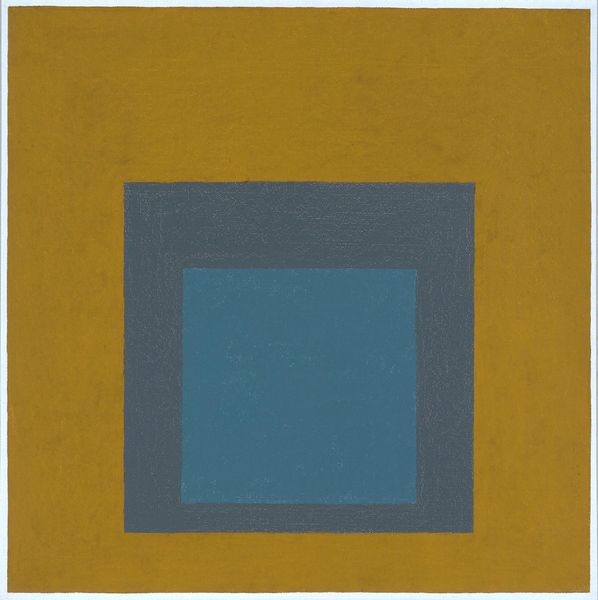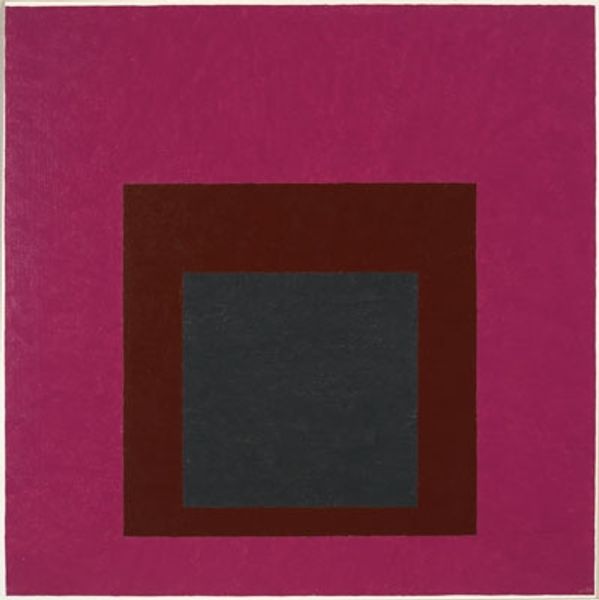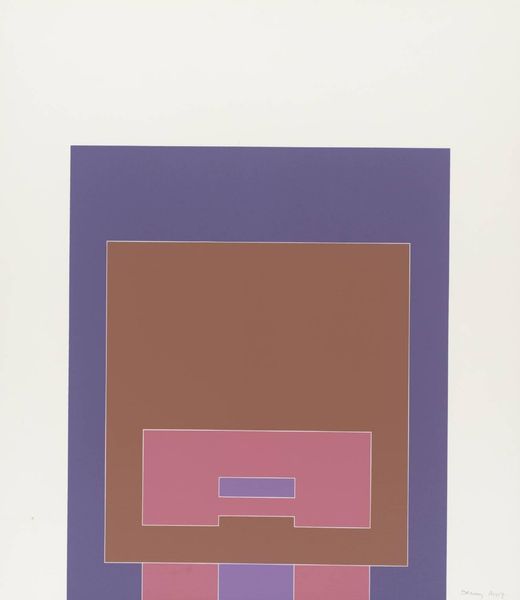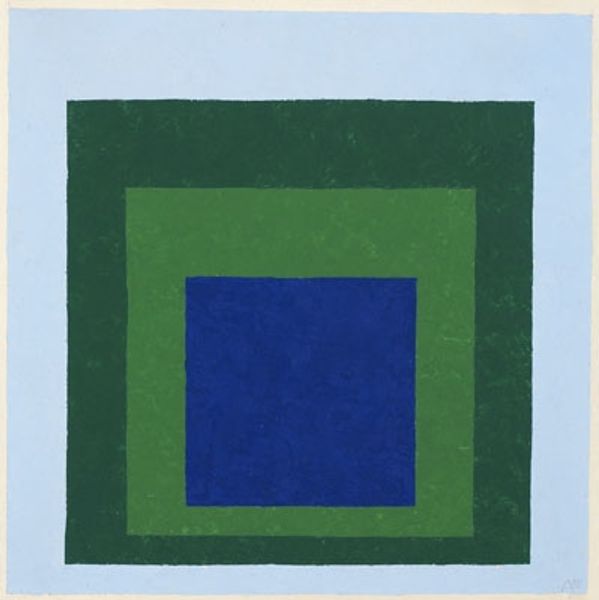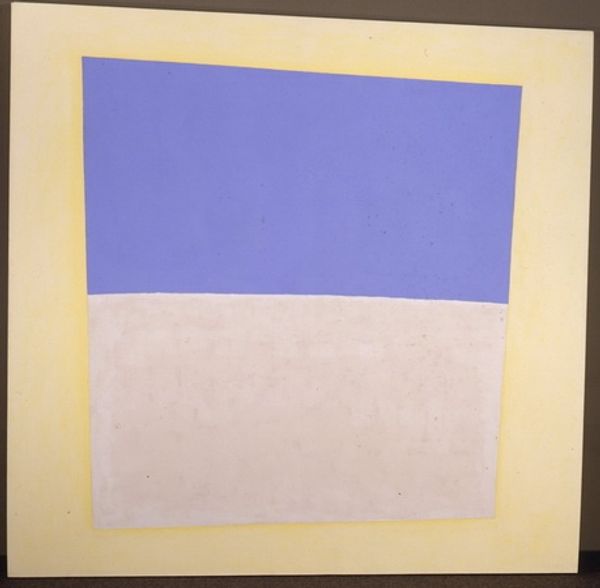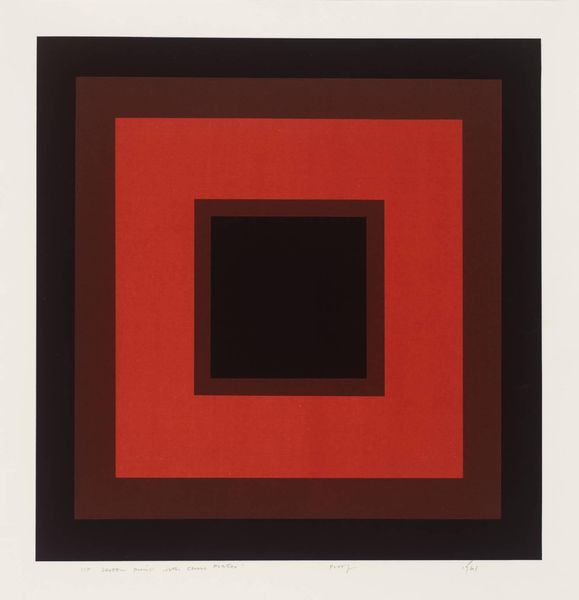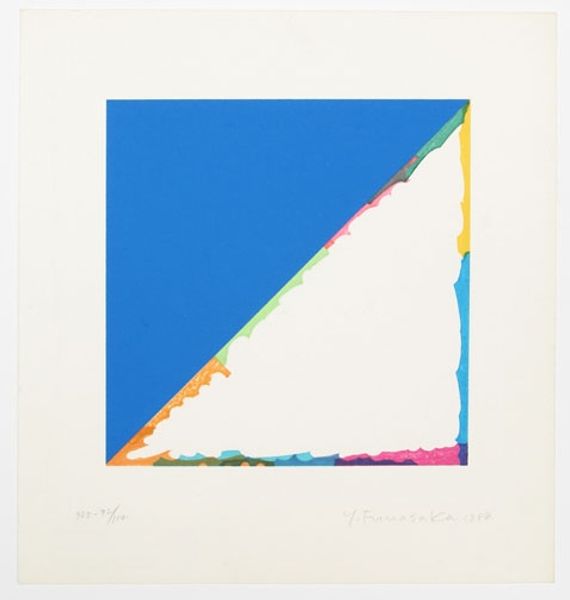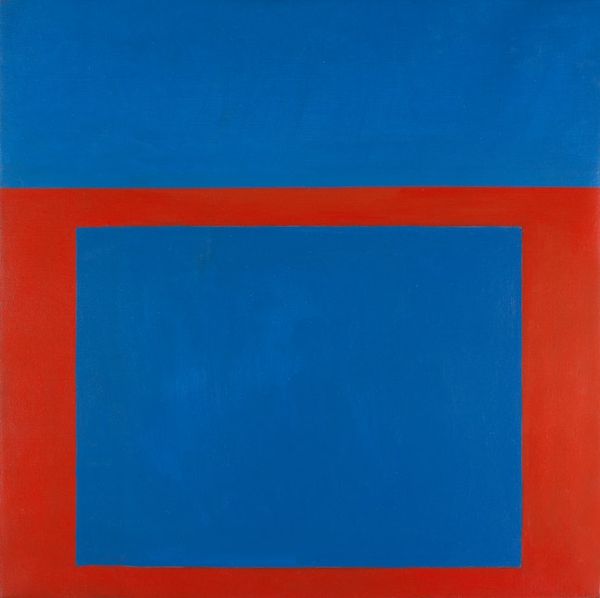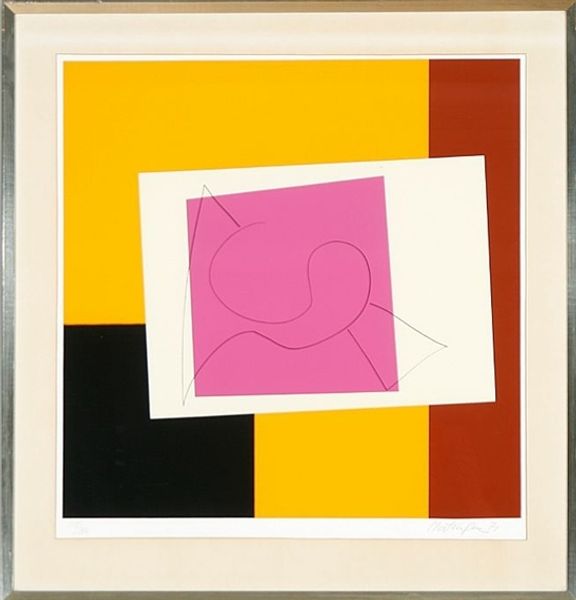
Dimensions: overall: 30.48 × 30.48 cm (12 × 12 in.)
Copyright: National Gallery of Art: CC0 1.0
Curator: Steve Locke's "Homage to the Auction Block #43, a separation," created in 2020 with acrylic paint, is a striking composition. Editor: It hits you immediately, doesn’t it? Those intense, concentric squares—pink, deep magenta, royal blue, and a final shadowy rectangle… it’s unnerving, like a visual representation of being cornered. Curator: Locke's work very often confronts historical narratives, particularly those concerning race, power, and social injustice. The "Homage to the Auction Block" series directly references the physical sites where enslaved people were sold. The geometrical form references conceptual hard-edge painting of the mid-twentieth century. Editor: Right. So these shapes aren’t arbitrary; the abstraction embodies this brutal history, asking how systems of oppression persist, perhaps masked in abstraction. The painting's separation element is not simply aesthetic; it symbolizes a rupture, loss, and perhaps forced displacement. Curator: Yes. The separation and use of hard-edged forms, a non-objective formal vocabulary is suggestive, but simultaneously distances the imagery from direct representation, offering a space for contemplation. Abstraction can also function as protection. The reference to the "Auction Block" is meant to raise issues and encourage viewers to respond to them directly. Editor: It does—especially the title combined with these clashing colors. It resists easy consumption; there’s a visceral tension, amplified, I think, by that almost naive, Pop Art sensibility that undercuts the seriousness on the surface. It implicates the viewer. Curator: The choice to utilize a formal language reminiscent of pop art definitely injects an element of cultural critique, juxtaposing the aesthetics of mass production with deeply personal and collective trauma. And his use of repetition within this series amplifies the relentless nature of this history. Editor: Absolutely. Ultimately, Locke transforms pure form into a potent commentary on American history, its ongoing effects, and its unsettling place within our contemporary consciousness. Curator: It's a reminder that even seemingly detached formal approaches can serve as powerful vehicles for confronting complex socio-political realities. Editor: I'm left pondering the responsibility of art and museums in representing—and interrogating—the past. It is work that actively confronts, rather than soothes.
Comments
No comments
Be the first to comment and join the conversation on the ultimate creative platform.


